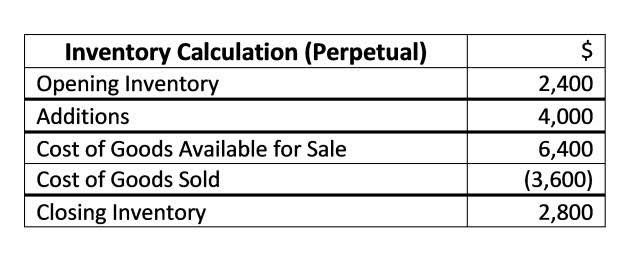
Nonprofits should work with their accounting professionals to ensure they are reporting expenses accurately and in accordance with applicable accounting standards. Functional expense allocation is the process by which a nonprofit organization’s accountant or bookkeeper classifies each expense by its functional classification. To better grasp functional expense allocation, it helps to understand why it’s important for nonprofit organizations in particular to report their expenses by function. Functional classification, on the other hand, groups expenses according to their purpose within the organization.
5.2 Analysis of expenses by nature and function
- However, nonprofit-friendly accounting software can help you make creating your Statement of Functional Expenses fairly easy.
- Allocating expenses is dividing overhead costs between all of the functions that are indirectly related to that cost.
- To better grasp functional expense allocation, it helps to understand why it’s important for nonprofit organizations in particular to report their expenses by function.
- Let’s say you rent a 20,000 square foot building for your nonprofit, which runs after-school programs in a disadvantaged neighborhood.
- This method of expense reporting is most commonly used by nonprofit organizations.
- Below is a simple flowchart illustrating how an expense originates, is classified by its nature (type), and ultimately is allocated among various functions.
Reporting expenses by nature and function is an important part of nonprofit accounting. By tracking expenses in this way, nonprofits can provide detailed information about how their funds are being used to achieve their mission and purpose. This information is important for building trust with donors and stakeholders, complying with IRS requirements, and making informed decisions about budgeting and spending.
Distinguishing Between Nature and Function
The key to tracking functional expenses is setting up processes and being disciplined with your bookkeeping. A Statement of Functional Expenses is a matrix-style report that shows the breakdown of functional and natural expenses in an easy-to-read table. We’re here to talk about functional expenses, but the Statement of Functional Expenses actually shows 2 types of expenses– functional and natural.
Understanding Expense Classifications and Allocation Methodologies
This transparency allows readers to understand how management divided expense items among various functions. The Statement of Functional Expenses that nonprofits issue is referred to as a matrix, because it requires organizations to report their expenses by both functional and natural classification. Accurate tracking of costs is imperative to avoid charging Accounts Receivable Outsourcing the same costs to multiple grants or programs, which can lead to compliance issues and potential loss of funding. Each cost should be allocated to the appropriate program or supporting service and documented to ensure accuracy.
- So if you’re ready to modernize your finances and finally find the time to focus on your mission, click the button below to find out how we can help you.
- These materials were downloaded from PwC’s Viewpoint (viewpoint.pwc.com) under license.
- Determining how to properly allocate funds can be difficult and ambiguous.
- But non-profits need to classify their expenses according to both nature and function.
- Expenses that are directly related to specific gross revenues may be displayed sequentially with the related revenues.
The Statement of Activities looks at the entire organization and reports on the revenues and expenses of the nonprofit during a specific reporting period. Yet many nonprofits struggle to keep their books updated or create the financial statements they need on time. And that leads to sloppy accounting, playing catch-up, and wasting a lot of time and money. 15% of your space (3,000/20,000) is used for admin, so you’d allocate 15% of your rent to general administration expenses. And the other 85% of your rent would be allocated to program expenses, as in the example above.
- This classification provides a straightforward view of what types of costs the organization incurs.
- While certain functional expenses may belong in a single category, many will serve multiple purposes.
- PwC refers to the US member firm or one of its subsidiaries or affiliates, and may sometimes refer to the PwC network.
- Reporting expenses by nature is useful because it shows the different types of costs involved in running a nonprofit organization.
- Functional classification, on the other hand, groups expenses according to their purpose within the organization.
- This requirement ensures that stakeholders such as donors, grantors, regulators, and the general public can better evaluate how resources are used to fulfill an organization’s mission.
These materials were downloaded from PwC’s Viewpoint (viewpoint.pwc.com) under license. Learn more about our decades of experience with nonprofit clients or connect with D+L here. You can also categorize those very same costs as Functional Expenses. So if you’re ready to modernize your finances and finally find the time to focus on your mission, click the button below to find out how we can help you.
Rather, it’s a way of looking at how you spent your money, according to the function that money accomplished. Reporting expenses functional vs natural expenses by function is important for several reasons. In CHO’s final Statement of Functional Expenses, each of these items is placed in the appropriate row (nature) and column (function).

Statement of Functional Expenses Example

This can be accomplished by developing cost centers within your accounting records for each program or grant. This helps ensure that costs are properly allocated throughout the year and allows for the easy creation of programmatic online bookkeeping trial balances/statement of activities which can be used for grant vouchering. For some not-for-profit entities (NFPs), a separate statement of functional expenses will be the most efficient and effective way of presenting the analysis of expenses by function and nature that is required under FASB ASC 958. With that in mind, the following are some best practices for organizations to keep in mind as they prepare these schedules.


The final column sums up the total for each natural line item, providing a comprehensive view of how the not-for-profit’s resources have been consumed. Program expenses are any costs related to running the various programs and services offered by a nonprofit organization, as per its mission. For established nonprofits, program expenses often make up the majority of their overall costs. Functional expenses are reported by their functional classification and recorded in a Statement of Functional Expenses.
